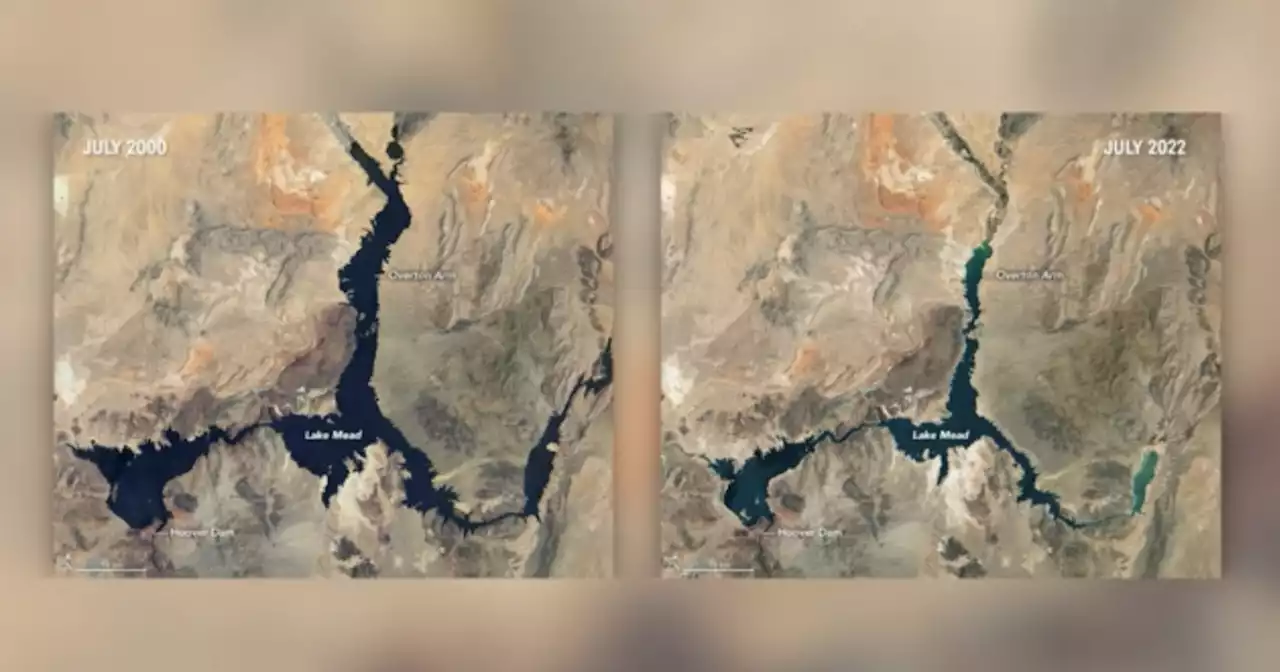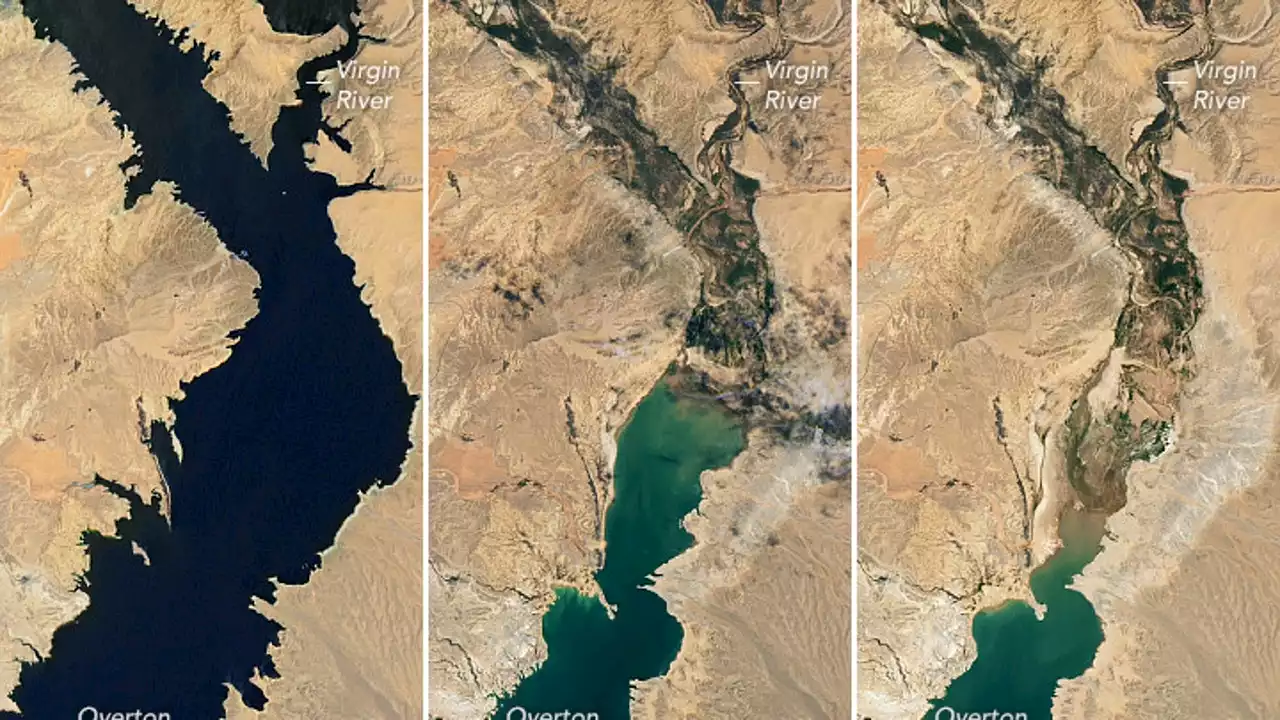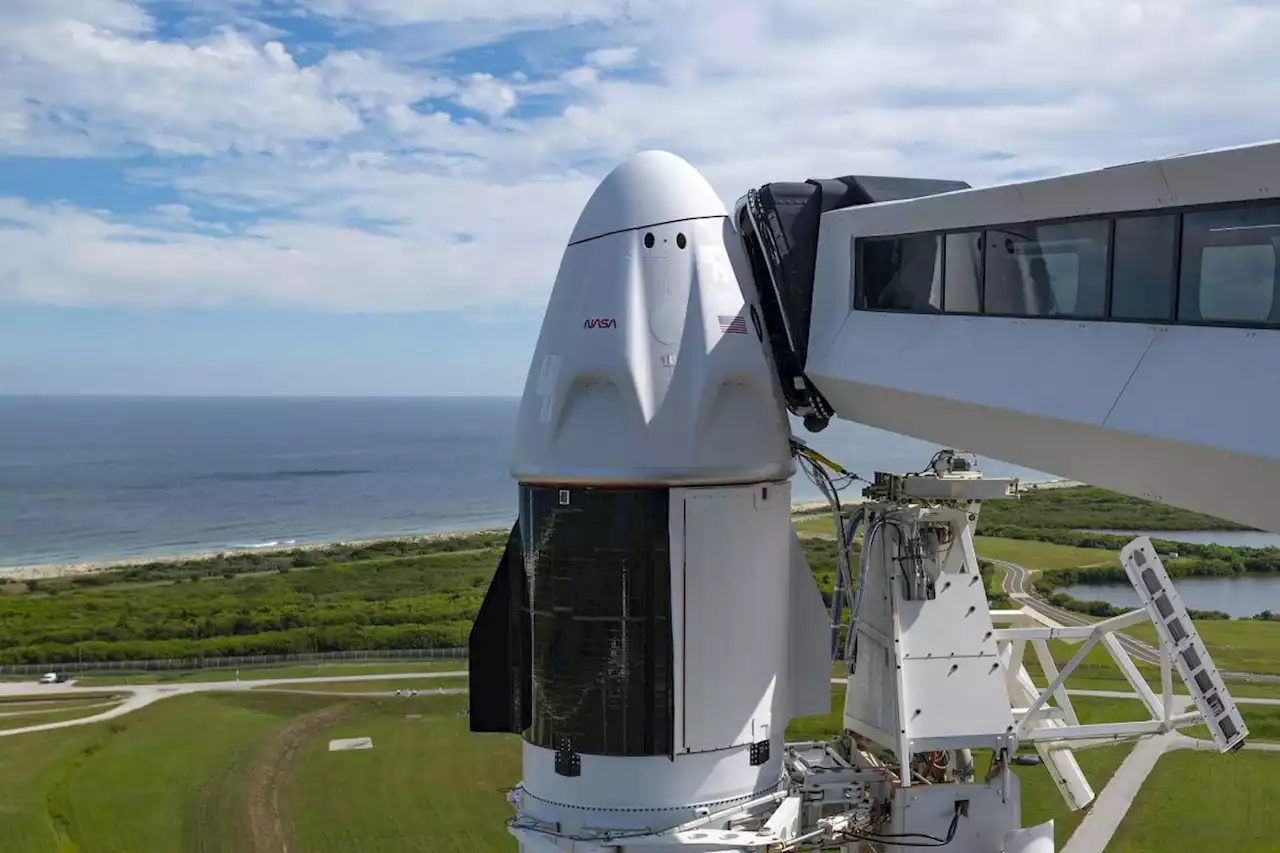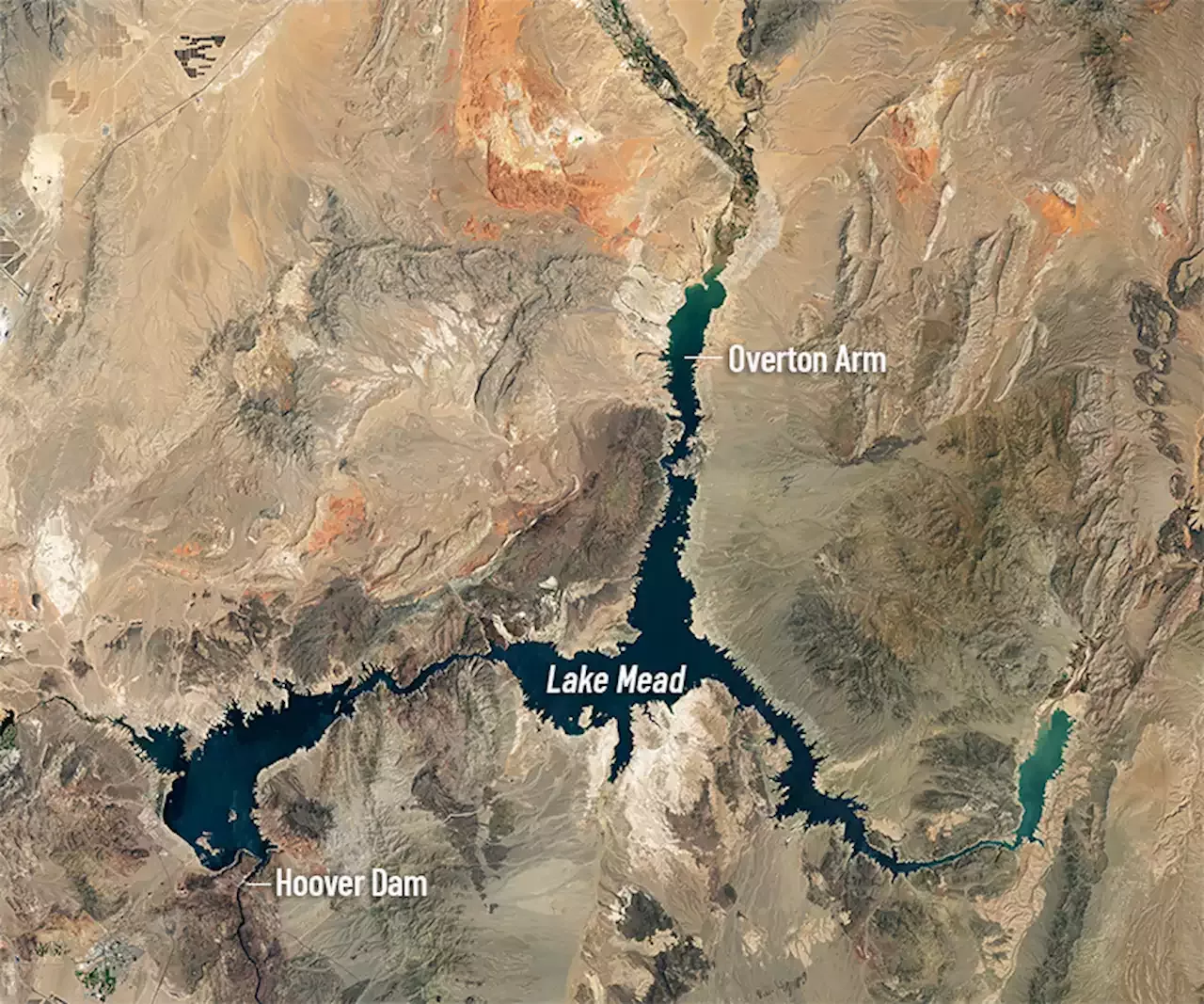The water levels are now at their lowest since 1937, when the lake was first being filled.
show the devastating water loss at Lake Mead, the country's largest reservoir and the source of water for tens of millions in the west.
The water levels are now at their lowest since 1937, when the lake that straddles Nevada and Arizona was still being filled for the first time, according to NASA. The images, taken 22 years apart, show the staggering impact climate change has had since 2000, when the first image was captured by NASA's Landsat 7. The second was taken by Landsat 8 in early July.Water from the reservoir supplies communities in California, Nevada, Arizona and parts of Mexico.
The lake is primarily maintained from snowmelt from Colorado and Wyoming. As megadrought conditions have continued to grip the western states for more than a decade, lower-than-average snowpacks have provided less water to fill the reservoir.
United States Latest News, United States Headlines
Similar News:You can also read news stories similar to this one that we have collected from other news sources.
 NASA satellite images reveal Lake Mead's dramatic water loss since 2000Satellite images show Lake Mead's dramatic changes between 2000 and 2022, as its water level has reached its lowest point in more than 85 years.
NASA satellite images reveal Lake Mead's dramatic water loss since 2000Satellite images show Lake Mead's dramatic changes between 2000 and 2022, as its water level has reached its lowest point in more than 85 years.
Read more »
 NASA releases Lake Mead images showing huge drop in water levels amid droughtSatellite images from NASA show a mineralized lakeshore that was underwater. Lake Mead is a huge water reservoir supplying water to seven states, Northern Mexico and tribal lands.
NASA releases Lake Mead images showing huge drop in water levels amid droughtSatellite images from NASA show a mineralized lakeshore that was underwater. Lake Mead is a huge water reservoir supplying water to seven states, Northern Mexico and tribal lands.
Read more »
 NASA imagery shows Lake Mead water levels lowest in more than 80 yearsLake Mead is estimated to be at just 27% of capacity.
NASA imagery shows Lake Mead water levels lowest in more than 80 yearsLake Mead is estimated to be at just 27% of capacity.
Read more »
 Mars sample return details coming next week, NASA and European Space Agency promiseThe briefing will present a mission architecture proposal by NASA and the European Space Agency.
Mars sample return details coming next week, NASA and European Space Agency promiseThe briefing will present a mission architecture proposal by NASA and the European Space Agency.
Read more »
 SpaceX's next astronaut launch for NASA slips to late SeptemberMeghan is a senior writer at Space.com and has more than five years' experience as a science journalist based in New York City. She joined Space.com in July 2018, with previous writing published in outlets including Newsweek and Audubon. Meghan earned an MA in science journalism from New York University and a BA in classics from Georgetown University, and in her free time she enjoys reading and visiting museums. Follow her on Twitter at meghanbartels.
SpaceX's next astronaut launch for NASA slips to late SeptemberMeghan is a senior writer at Space.com and has more than five years' experience as a science journalist based in New York City. She joined Space.com in July 2018, with previous writing published in outlets including Newsweek and Audubon. Meghan earned an MA in science journalism from New York University and a BA in classics from Georgetown University, and in her free time she enjoys reading and visiting museums. Follow her on Twitter at meghanbartels.
Read more »
